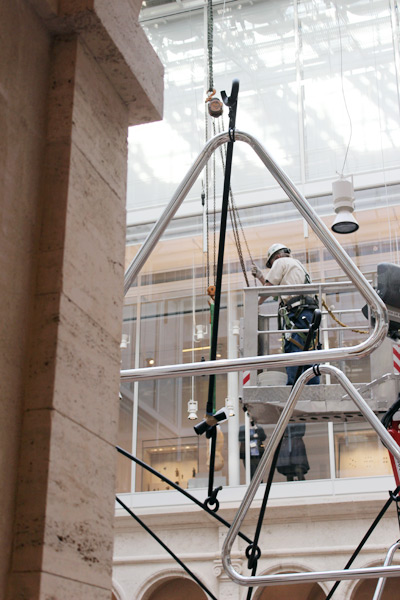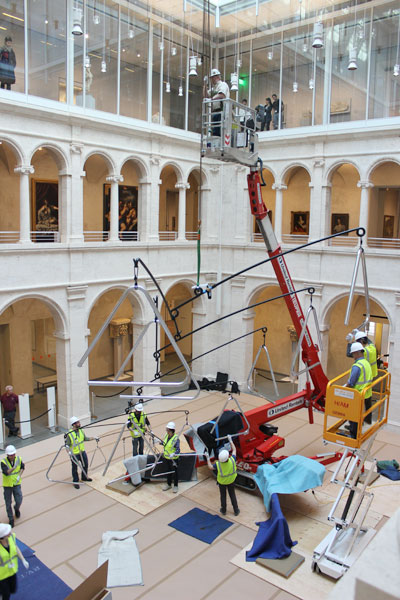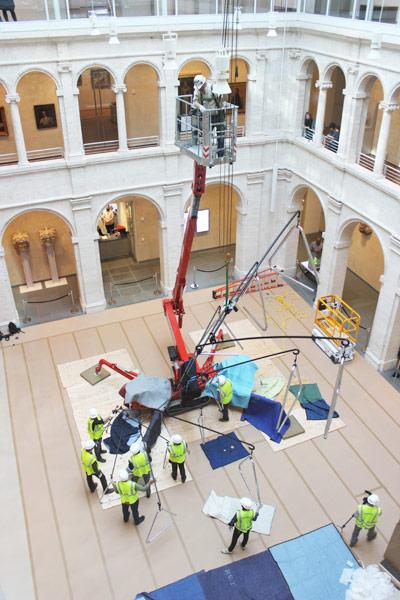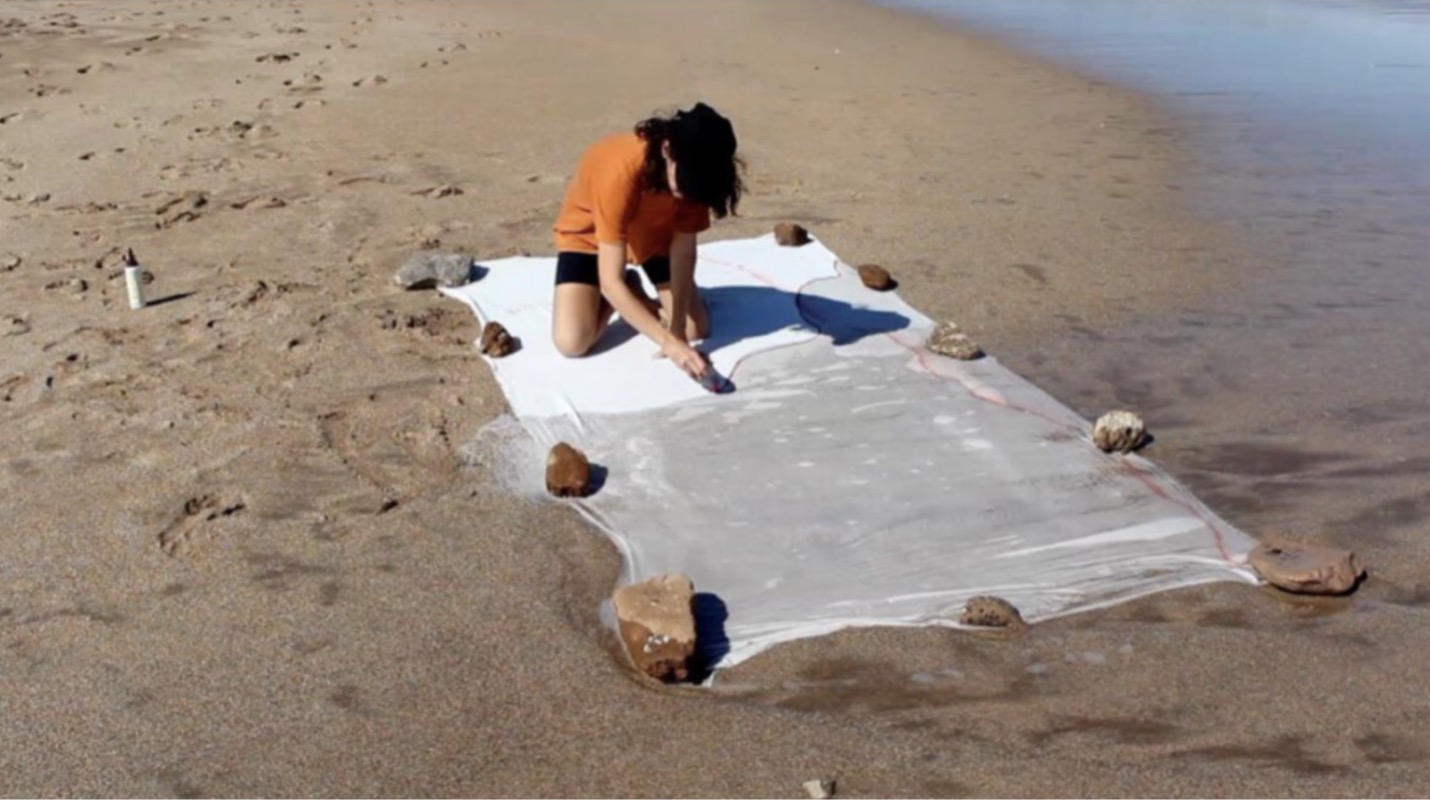How does one go about hanging a 556-pound steel sculpture over a public courtyard? Very carefully.
On April 15, the Harvard Art Museums installed contemporary Mexican artist Carlos Amorales’s Triangle Constellation in the central Calderwood Courtyard. The specially commissioned mobile sculpture, approximately 10 by 22 feet, consists of 16 chrome-plated triangles and 15 painted steel bars. The work hangs from a cable about 32 feet above the courtyard floor, with the lowest triangle about 10 feet above the floor.
While safely suspending a large-scale work in a public setting can be a major undertaking in itself, Triangle Constellation needed to be installed within a day, ideally, and during normal public visiting hours.
As Amorales developed the work over the past year and a half, his studio kept the museums up to date through renderings and photos. In turn, museums staff thought hard about how to prepare the courtyard before and after the installation, so that public safety would be foremost but visitors would still have a firsthand glimpse into the process of installing art.
About a week before installation, as Amorales’s disassembled work was being shipped from Mexico, the facilities and collections management staff, led by Karen Gausch, manager of exhibition production and collections care, began working intensely with Michael Eigen, assistant facilities manager. Together, they planned the mechanics of the sculpture’s installation and its connections to the ceiling structure. A temporary ramp was constructed in front of the museums’ Quincy Street entrance in order to bring in a large red crane, needed to raise Triangle Constellation to its proper height.
On the morning of installation, Diamond Steel metalworker Jeff Cook went inside the crane’s lift and raised his platform high above the floor. Below him stood six art handlers, along with the artist, his architect and engineer Diego San Vicente, and Mary Schneider Enriquez, the museums’ Houghton Associate Curator of Modern and Contemporary Art. Under the direction of Amorales and San Vicente, the art handlers carefully unwrapped black, painted steel pieces of Triangle Constellation, and began to individually hook them to a heavy, long metal chain (a “chainfall”) suspended from the ceiling. From above, Cook hoisted the chainfall in small increments, slowly raising individual pieces to make room for art handlers below to attach lower segments as well as the chrome-plated steel triangles. The layered mobile gradually took shape, with bars and triangles balancing themselves by their own weight.
“At one point, there were seven of us holding on to various parts of the work,” said senior collections specialist Jon Roll. “It was an incredible feeling having it lifted out of our hands. You could really feel the tension, how each piece balances the others.”
Amorales’s team had advised museums staff that assembling Triangle Constellation would take about an hour, and with the conscientious work of all involved, that proved true. Work began around 9:15am, and by the time the museums opened at 10am, the mobile was nearly complete. (By one person’s count, the entire installation took an hour and 14 minutes.)
“It started to come alive as it was being put together,” Gausch said. “It went from being a bunch of parts in a box to being this living, moving entity.”
After Triangle Constellation was raised to its final height from the floor, it was secured on two specially designed kingposts, or steel trusses designed to hold 1,000 pounds each, that are part of the rafters under the courtyard’s glass roof. A newly added support beam offered additional stability.
As the first visitors entered and glimpsed the emerging art, many did a double take.
“That’s crazy,” one person exclaimed. “It’s beautiful,” said another. School groups walked to Levels 2 and 3 to watch from above.
Craig Ronan and his friend Patrick Sullivan spent the beginning of their morning visit standing around the perimeter of the courtyard looking up. Ronan, a Somerville artist, said he hadn’t known that the installation would be happening, but it was “incredible” to watch. Added Sullivan: “Seeing this getting set up is almost as interesting as the art itself. This is something you can imagine that even the average person could interact with.”








